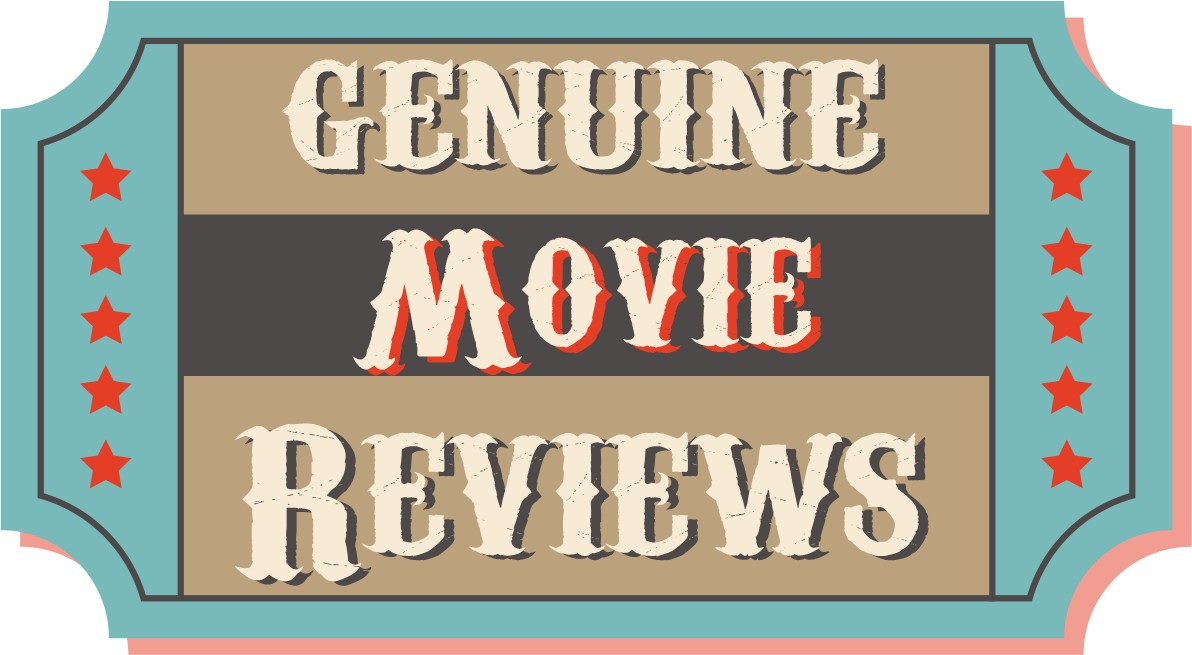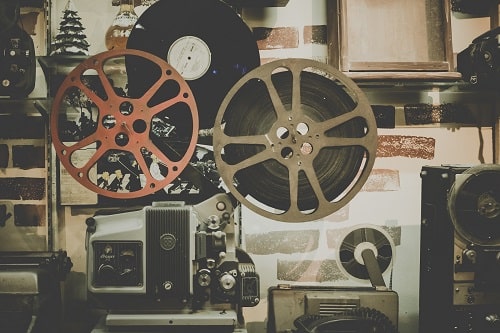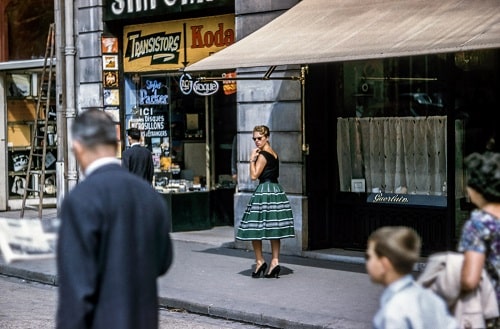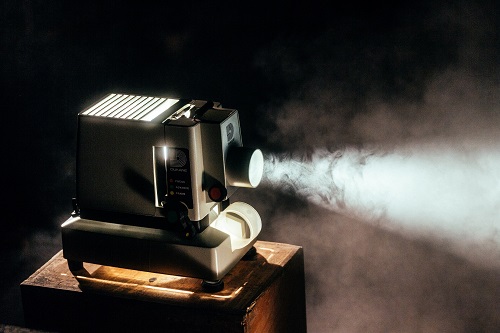When Tim Burton’s “Beetlejuice” first hit theaters in 1988, it quickly became a cult classic, captivating audiences with its unique blend of horror and comedy. The film’s quirky, gothic style and imaginative storyline set it apart from anything else of its era. Decades later, it still holds a special place in the hearts of fans and continues to garner new admirers.
Nearly four decades later, Michael Keaton returns to his iconic role, in “Beetlejuice Beetlejuice”, Tim Burton’s sequel to his cult classic hit. In anticipation of this sequel, we’ll dive into what made “Beetlejuice” such an enduring piece of cinematic art. From Michael Keaton’s iconic performance as the titular mischievous ghost to the innovative use of special effects and set design, every element will be explored to understand the movie’s lasting appeal and impact on popular culture. Whether you’re a longtime fan or new to the world of Beetlejuice, there’s plenty to discover about this beloved film.
Features
“Beetlejuice” is renowned for its distinctive style and creative elements that continue to resonate with viewers. Below, we explore the features that set this film apart and focus on its visuals, special effects, and audio design.
Visuals and Special Effects
“Beetlejuice” showcases a visually rich palette that mirrors Tim Burton’s signature gothic aesthetic mixed with vibrant, over-the-top whimsy. The special effects, particularly groundbreaking for the late 1980s, play a crucial role in fabricating the quirky, otherworldly dimensions that the characters interact with. The use of practical effects, such as the infamous “shrunken head” and “stretching faces,” provides a tactile authenticity that CGI struggles to match even today. These effects were complemented by the imaginative costumes and makeup, especially Beetlejuice’s iconic striped suit and disheveled look, which became symbols of the character’s anarchic spirit. The set designs, from the eerie, dilapidated model town to the surreal, colorful underworld, contribute to a visually compelling world that firmly grips the audience’s imagination.
Soundtrack and Audio Design
Danny Elfman’s score for “Beetlejuice” is as iconic as the visuals. His whimsical yet eerie musical compositions perfectly encapsulate the film’s chaotic and ghostly atmosphere, significantly adding to the viewer’s experience. The soundtrack, which mixes calypso music with orchestral scores, sets a unique tone that complements the film’s eclectic aesthetic. Notably, the “Banana Boat Song (Day-O)” scene remains one of the most memorable musical moments in film history, blending humor and horror in a way that only “Beetlejuice” could achieve. The sound effects are equally inventive, with auditory cues that enhance the supernatural elements without overpowering the scenes. The creaking doors, ghostly whispers, and sudden loud noises effectively contribute to creating a hauntingly playful ambiance that echoes throughout the film.
Performance
The performance elements of “Beetlejuice” are integral to its continued acclaim and address both the onscreen talent and the distinctive directorial approach which combine to create an eerie yet humorous film experience.
Cast and Character Portrayal
Michael Keaton’s portrayal of Beetlejuice is nothing short of iconic. His energy and eccentricity breathe life into the ghostly character, making every scene he appears in a showstopper. The flair with which Keaton delivers comedic dialogue, complemented by his erratic yet captivating physical comedy, sets a high benchmark for character portrayal in fantasy and comedy films. Winona Ryder as Lydia Deetz brings a gothic charm that perfectly balances Keaton’s manic Beetlejuice, adding depth and relatability to the film. Her ability to convey both innocence and a cynical old soul contributes greatly to the film’s appeal across diverse audiences. The supporting cast, including Catherine O’Hara and Alec Baldwin, deliver performances that bolster the film’s charm with their impeccable timing and understanding of the film’s quirky tone.
Direction and Cinematography
Tim Burton’s unique visual and directorial style is evident in every frame of “Beetlejuice.” His approach combines dark, gothic motifs with whimsical patterns to create a surreal experience that’s visually enthralling and distinctively Burton-esque. The cinematography by Thomas Ackerman complements Burton’s vision with its dynamic camera work, capturing the bizarre and topsy-turvy world with a keen eye for detail and movement. This dynamic visual storytelling is crucial in scenes like the infamous dinner party “Day-O” sequence, where the choreography and camera movements harmonize to create one of the film’s most memorable moments. Burton’s use of vibrant contrasts and unusual angles contributes greatly to the uneasy yet comic atmosphere of the film, making it a visually stimulating and unpredictable ride.
User Experience
Delving into the user experience of “Beetlejuice,” it’s evident that the film’s eclectic mix of humor, horror, and creative visuals form a unique viewing journey. This section explores different aspects of the experience to gauge how they resonate with audiences and contribute to the movie’s lasting appeal.
Atmosphere and Engagement
“Beetlejuice” excels at creating a compelling atmosphere that thoroughly immerses the viewer. The blend of Tim Burton’s dark, gothic style with unexpected bursts of colorful whimsy captures the attention from the start. Scenes such as the infamous “Banana Boat Song” moment not only serve as comic relief but also exemplify the film’s ability to switch tones seamlessly, maintaining high engagement throughout. The blend of eerie ghostly elements with the quirky, exaggerated reality of the Deetz family’s world plays a crucial part in the film’s ability to retain its charm and relatability over decades.
The attention to detail in the set design and special effects further enriches the visual experience, making each scene a feast for the eyes while supporting the narrative’s ghostly antics. For audiences, the unpredictability of the storyline paired with vibrant cinematography means there’s rarely a dull moment, leading to a continuously captivating experience.
Pacing and Story Development
The pacing of “Beetlejuice” is another element that significantly enhances the user experience. Tim Burton masterfully manages the storyline’s rhythm, ensuring that the plot moves swiftly without sacrificing detail. The film progresses from the initial introduction of the Maitlands’ demise to the chaotic intervention of Beetlejuice with finesse, keeping viewers hooked with a well-balanced mix of suspense and comedy.
Story development is handled with creativity, as the narrative introduces complex ideas like the afterlife bureaucracy in a light and humorous manner. The clear, yet innovative, exposition allows viewers to follow along with ease despite the fantastical elements present throughout the film. The characters’ arcs unfold in ways that are consistent with the film’s tone, contributing to a well-rounded storyline. As Beetlejuice’s antics escalate, so does the level of engagement, culminating in a climactic resolution that satisfies the buildup of plot and character dynamics, thus providing a seamless viewing experience.
Pros
“Beetlejuice,” directed by Tim Burton, stands out as a quintessential hallmark in cinema due to its distinctive fusion of horror and comedy. One of the film’s most pronounced strengths is its unforgettable performances, particularly Michael Keaton’s portrayal of the titular character. Keaton brings a chaotic energy that perfectly complements the film’s quirky and eccentric atmosphere. This role is often cited as one of his most iconic, showcasing his versatility and commitment to the character.
The film’s design elements also play a significant role in its success. The set design and special effects were pioneering at the time of the movie’s release and they continue to impress audiences even today. The use of practical effects, rather than relying solely on CGI, contributes to the film’s enduring charm and tactile visual style. For instance, the elaborate makeup and prosthetics used to create characters like Beetlejuice and the various inhabitants of the underworld are both impressive and creatively inspired.
Another significant pro is Danny Elfman’s memorable score, which captures the whimsical yet macabre spirit of the film. The soundtrack complements the visual storytelling effectively, enhancing the immersive experience of the movie. The choice of songs and the original score by Elfman play a crucial role in setting the tone and enhancing the film’s quirky, gothic vibe.
Furthermore, the screenplay’s clever blend of humor and horror has set “Beetlejuice” apart from straightforward horror or comedy films. This blend allows for a broad appeal, attracting fans of different genres and contributing to its status as a cult classic. The film’s pacing and story development also merit praise. Tim Burton masterfully manages to keep the storyline engaging without sacrificing the development of characters or the film’s unique style.
Overall, the innovative combination of horror and comedy, coupled with standout performances and creative direction, make “Beetlejuice” a memorable film that continues to captivate and entertain audiences decades after its release.
Cons
While “Beetlejuice” is praised for many aspects, it does not come without its flaws. There are several aspects that some viewers might find less appealing. Firstly, the pacing of the film, while generally well-received, can be disjointed. Certain scenes seem to abruptly jump with little to no transition, which might confuse viewers who are used to a more linear narrative flow.
Another point of contention is the film’s handling of sensitive themes. The portrayal of the afterlife and death might be unsettling for some, particularly given its lighthearted and comedic approach. This could be perceived as insensitive by audiences who prefer a more serious or respectful treatment of such themes.
Additionally, the special effects, though innovative at the time of the release, might not hold up to the contemporary standard expected by newer audiences. Younger viewers accustomed to high-definition CGI might find the practical effects in “Beetlejuice” somewhat dated or less immersive.
Furthermore, some characters in the film, despite the brilliant main performances, appear underdeveloped and merely serve as plot devices. This lack of character depth can be disappointing for viewers who appreciate fully fleshed-out backgrounds and motives.
Lastly, the humor in “Beetlejuice,” which leans heavily on dark comedy, might not resonate with everyone. Its particular brand of humor, which includes bizarre and sometimes grotesque comedy, could be off-putting to those who are not fans of such stylistic choices.
These elements combined might detract from the overall enjoyment of the film for a portion of the audience, though it continues to hold a dear place in many hearts as a cult classic.
Comparison
When placed next to Tim Burton’s other projects, “Beetlejuice” stands out for its radically different approach and execution. Here’s how it compares to some of Burton’s other iconic films.
Beetlejuice vs. Other Classic Tim Burton Films
“Beetlejuice” often draws comparisons with other Tim Burton films like “Edward Scissorhands” and “The Nightmare Before Christmas” due to its distinct darkness intertwined with whimsical elements. Unlike “Edward Scissorhands,” which presents a gothic romance steeped in melancholy and sympathy for its protagonist, “Beetlejuice” adopts a more irreverent and chaotic tone. The lead character, portrayed remarkably by Michael Keaton, is mischievous and unruly, contrasting sharply with the more somber and tragic figure of Edward crafted compellingly by Johnny Depp.
Comparing “Beetlejuice” to “The Nightmare Before Christmas,” one observes Burton’s continued affinity for blending the macabre with the enchanting. However, “Beetlejuice” does not adopt the family-friendly overlay that “The Nightmare Before Christmas” benefits from. Instead, it navigates through adult themes and darker humor, carving its unique niche in Burton’s filmography. The film uses its horror-comedy angle to push boundaries more aggressively than the spooky yet sweet nature of “The Nightmare Before Christmas.”
This unique positioning of “Beetlejuice” showcases Burton’s ability to flex different muscles within the genre, making each film distinct yet unmistakably his own creation.
Conclusion
“Beetlejuice” remains a pivotal piece in Tim Burton’s filmography, captivating audiences with its unique charm and bold aesthetic. Despite its flaws, the film’s impact on the genre and its contribution to Burton’s career can’t be overstated. It’s a testament to the director’s ability to blend the macabre with the whimsical, creating a cinematic experience that continues to resonate with fans old and new. Whether you’re revisiting the film or discovering it for the first time, “Beetlejuice” offers a fascinating glimpse into the creative mind of one of Hollywood’s most distinctive directors.
With the sequel, “Beetlejuice Beetlejuice” set to hit theaters this fall, fans of the original are excited to see Michael Keaton and Winona Ryder reprise their roles from the iconic cult classic. Joined by Jenna Ortega who portrayed Wednesday Addams in Tim Burton’s Netflix series “Wednesday, we are eager to see if Burton can once again capture the horrific magic of the original.


 RELATED POSTS
RELATED POSTS





0 Comments